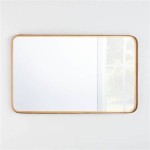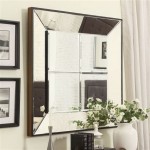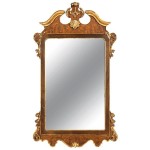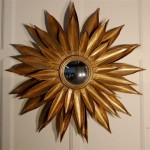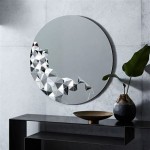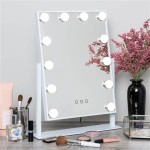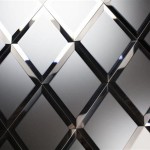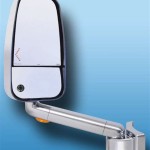How to Hide a TV Behind a Mirror: A Comprehensive Guide
Concealing a television behind a mirror offers a sleek, modern solution for integrating technology seamlessly into any living space. This approach maximizes space while preserving the room's aesthetic appeal when the television is not in use. This guide outlines various methods for achieving this, ranging from DIY solutions to professional installations.
Key Considerations Before Starting
Several factors influence the best approach for hiding a television behind a mirror. Understanding these considerations ensures a successful and satisfying outcome.
- Budget: Costs vary significantly depending on the chosen method, from affordable DIY solutions to more expensive professional installations.
- Technical Skills: Some methods require more advanced DIY skills, while others involve simpler assembly.
- Mirror Size and Type: The dimensions and type of mirror must be compatible with the television's size and the chosen hiding mechanism.
- TV Size and Placement: The television's size and intended placement affect the mirror and frame choices.
- Room Aesthetics: The overall style of the room should guide the selection of the mirror frame and its integration into the existing décor.
Method 1: Utilizing a Two-Way Mirror
A two-way mirror, also known as a dielectric mirror, allows images to be seen through it when the television behind it is on, while reflecting like a regular mirror when the television is off. This method offers the most seamless integration.
- Sourcing: Two-way mirrors can be purchased from specialized glass suppliers and online retailers.
- Framing: Professional framing is recommended for larger mirrors to ensure secure mounting and a polished finish.
- Placement: Choose a location with adequate ventilation to prevent the television from overheating.
Method 2: Building a DIY Sliding Mirror System
A sliding mirror system allows a mirror to slide horizontally or vertically to reveal the hidden television. This method requires more DIY skills but offers a cost-effective solution.
- Materials: Materials include sliding track hardware, a mirror cut to size, and wood or metal for the frame.
- Construction: The frame should be built to accommodate the mirror and sliding mechanism securely.
- Installation: Ensure the sliding mechanism operates smoothly and the mirror aligns correctly when covering the television.
- Finishing: Paint or stain the frame to match the room's décor.
Method 3: Employing a Hinged Mirror System
A hinged mirror system allows the mirror to swing open, revealing the television mounted behind it. This method is relatively simple to construct and provides easy access to the television.
- Materials: Materials include hinges, a mirror, and materials for constructing the frame.
- Construction: Securely attach the hinges to the mirror and frame, ensuring smooth operation.
- Mounting: Mount the frame securely to the wall, ensuring it can support the weight of the mirror.
Method 4: Using a Motorized Lift Mechanism
This method involves a motorized lift system that raises the television from a concealed compartment below when needed and lowers it back into the compartment when not in use. The mirror remains stationary above the compartment.
- Mechanism: Purchase a motorized lift mechanism designed for televisions.
- Installation: Professional installation is often recommended for these complex systems.
- Integration: Carefully integrate the lift mechanism and compartment design to ensure smooth operation and a clean finish.
Method 5: Repurposing Existing Furniture
Existing furniture, such as an armoire or cabinet, can be modified to conceal a television. This method is particularly suitable for traditional or classic interiors.
- Modification: Adapt the chosen furniture piece to accommodate the television and the chosen hiding mechanism (sliding doors, hinged doors, or a lift system).
- Integration: Ensure the modified furniture piece integrates seamlessly with the room's existing décor.
Mirror and TV Compatibility: Ensuring Optimal Viewing
Regardless of the chosen method, certain considerations regarding mirror and TV compatibility apply.
- Mirror Reflectivity: High-quality, low-iron glass mirrors offer better clarity and light transmission for optimal viewing.
- TV Brightness: The television should have sufficient brightness to be viewed clearly through the mirror.
- Ambient Lighting: Controlling ambient light can significantly enhance viewing quality.
Power and Connectivity: Planning for Accessibility
Planning for power and connectivity is crucial for a functional and user-friendly setup.
- Cable Management: Conceal cables and wires to maintain a clean and organized appearance.
- Power Outlets: Ensure convenient access to power outlets for the television and any additional components.
- Remote Control Functionality: Consider infrared repeaters or other solutions to ensure remote control functionality when the television is hidden.

Tv Behind A Mirror Living Room In Bedroom

The Living Room Tv As We Know It Is Over Laurel Home

22 Modern Ideas To Hide Tvs Behind Hinged Or Sliding Doors House Interior Decor Home

29 Creative Modern Ways To Hide A Tv Digsdigs

Hide Your Tv Behind This Magic Mirror The Gadgeteer

Stimuli Sight Sound Llc Hide Tv Over Fireplace

Tv Behind A Mirror

Tv Coverups Hide Your With Art Or A Frame Mirror

Diy Mirror Box To Hide Mounted Tv Framed Living Room Wall Decor

8 Smart Ways To Hide Your Tv Wma Property

